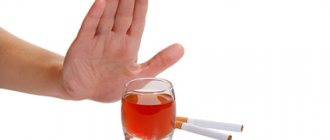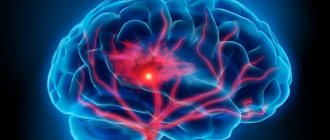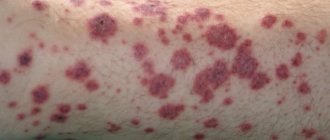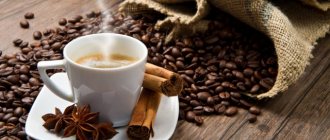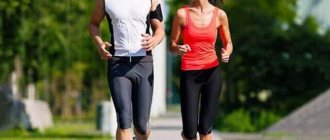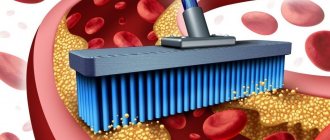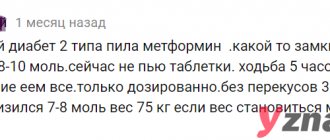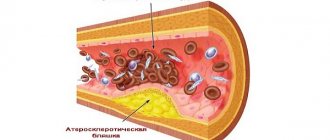Bath with mustard
If headaches are added to the symptoms of vascular dystonia, you can try treatment with mustard. You will need 5 tbsp. dilute dry mustard in warm water to form rich sour cream. The resulting mass is poured into a bath filled with water at a temperature of 39 degrees.
You need to plunge into the bath for 7 minutes without rinsing, wrap yourself in a terry sheet and go to bed. All that remains is to drink lemon balm tea to feel better.
Medicinal herbs
Therapy for dystonia with folk remedies includes many recipes for herbs and plant materials. We are talking about motherwort, valerian, hawthorn, caraway, dill, calendula, mint and barberry.
By using folk remedies based on herbs daily, you can notice improvements after just 2 weeks. The course of therapy will not be limited to two weeks - herbal treatment requires patience.
The dosage of herbs varies at different ages - adults take 2 tbsp of decoctions of medicinal plants. per day, children 6-10 years old - 1 tbsp., children 3-6 years old - 1 tsp. The dosages indicated are average; the doctor will prescribe the norms on an individual basis.
The collection for VSD in men includes herbs: 4 parts each of rose hips and ground licorice root, 3 portions each of St. John's wort and valerian roots, 2 portions each of mistletoe. To treat the disease, women take herbs: 3 parts each of viburnum berries and ground angelica roots, 2 parts each of rose hips, stinging nettle, wormwood, dandelion roots and rhodiola.
The preparation of the decoction is the same - the plant material is ground in a coffee grinder, then 2 tbsp. Powder is poured into a thermos and 0.5 liters of boiling water is poured. The decoction is infused overnight, treatment begins in the morning, taking 50 ml 3 times a day. The course lasts about 2-3 months.
The most effective recipes
To cope with vegetative-vascular dystonia on your own and at home, you can prepare a healing decoction. To do this, in one container you need to mix a spoonful of caraway seeds and sweet clover herb, two spoons of oat grains and rose hips, and the same amount of dried black currant berries. Add four tablespoons of hawthorn, immortelle and lemon balm, as well as six tablespoons of marsh cudweed.
To enhance the therapeutic effect, add three tablespoons of motherwort and calendula flowers, as well as a small spoon of fragrant rue, to the remaining ingredients. The resulting composition is poured into two cups of hot water and infused for several minutes. The finished medicine is drunk up to six times a day, 30 ml. And it helps a lot when it comes to hypertensive dystonia.
If the disease provokes insomnia and restless sleep, then you can use aromatherapy. An ordinary piece of gauze should be folded in three layers and fern, bay leaves and hop cones should be poured into it. All components are tied into a bag, which is best hung in the bedroom above your head. You can just put it near the bed. The aroma emanating from a homemade bag will have a calming effect.
A fragrant bag of herbs will help with insomnia due to VSD
There is another recipe for a healthy drink that will relieve blood pressure surges, eliminate anxiety and improve overall well-being. It is prepared from chamomile, elecampane root, St. John's wort and honey. All ingredients are mixed in equal quantities, crushed and poured with slightly cooled boiling water. When the decoction is infused, honey is added to it and 120 ml is consumed orally in the morning before breakfast. The entire course will take one month, but then the person will not experience symptoms of VSD.
If you feel weakness and increased fatigue, you need to mix strawberry leaves, prickly tartar, birch and nettle leaves, elecampane and knotweed, as well as rose hips. When all the ingredients are mixed, you need to take three large spoons and brew them in 500 ml of boiling water. Take home medicine in the morning, afternoon and evening, 50 ml. This should be done at least forty minutes before a meal. The decoction itself can be stored in the refrigerator, but no more than three days.
Additionally, you need to create the right diet, rich in foods that contain potassium. These are bananas and baked potatoes, apricots and eggplants, spinach and parsley, cabbage and milk.
Hypertensive type of VSD
To treat vegetative-vascular dystonia in this form, you need to limit salt in dishes, and if you have excess body weight, you need to review the caloric content of foods. Herbal medicine is prescribed on an individual basis and the course is maintained for at least 4 months.
In order for the decoction to reduce blood pressure, the collection must contain one of the following plants: horse sorrel, Scutellaria baicalensis root, white magnolia flowers, eucommia bark, spherophysa solonets.
The doctor can choose herbs in preparations:
- take horsetail, sweet clover, mint, valerian roots, and mistletoe in equal parts and mix. You will need 6 g of the mixture, which is poured with a glass of boiling water and heated in a water bath for 10-12 minutes. Then the broth is infused for an hour. The medicine is taken 4 times a day, 50 ml;
- Mix lemon balm, lingonberry leaves, and hawthorn flowers in equal proportions. Measure out 8 g of the mixture, pour in 0.3 liters of boiling water and infuse. You need to take the decoction 50 ml 5 times a day;
- take equal parts of rowan berries, rose petals, periwinkle, hawthorn, after which 8 g of the mixture is brewed with boiling water in a volume of 0.3 liters. Take a quarter glass three times a day before meals;
- take equal measures of hop fruits, yarrow, valerian roots, viburnum and raspberry shoots and grind them in a coffee grinder. The mixture in a volume of 8 g is poured with 0.3 cold water, left for 3 hours, then boiled for 3 minutes. After an hour, strain the broth and drink little by little throughout the day;
- take equal parts of herbs: lemon balm, motherwort, add hawthorn fruits, sophora buds, coltsfoot leaves. Take 6 g of herbs, pour a glass of boiling water, heat for 10 minutes in a steam bath and then infuse. Drink the resulting decoction 4 times during the day;
- Mix hawthorn flowers, strawberry leaves, mistletoe, rue greens, lemon balm leaves, hop cones in equal parts, then take 8 g from the resulting mixture and pour boiling water in a volume of 0.3 liters. Infuse the mixture for vascular dystonia for an hour, then drink before meals, dividing into 3 doses during the day;
- measure equally astragalus, rue, sweet clover, shepherd's purse, viburnum shoots, hawthorn berries, sophora buds, Baikal skullcap root, then 8 g of the mixture is poured with boiling water in a volume of 0.3 liters. After warming up for 15 minutes in a water bath, the medicine is infused for 3 hours in a thermos, taken in 5 doses during the day.
The choice of collection will depend on the state of blood pressure and the general well-being of the patient, since each herbal collection has its own properties. The doctor can alternate herbs from course to course, taking a break between them. Positive effects can be noticed after the first week of taking herbs.
Collection for intracranial pressure and hypertension
Take 1 part of chicory flowers, St. John's wort, speedwell herb, strawberry leaf, 2 parts of yarrow herb and rose hips, 0.5 parts of calamus rhizome and juniper fruits. Mix all the components of the collection. We use it as follows: pour 2 tablespoons of the mixture into a thermos, pour 0.5 liters of boiling water and leave overnight. In the morning, strain the infusion, and take it warm in 3 doses half an hour before meals. You can add 1 teaspoon of honey. This infusion works wonders for the body. The condition improves, the head becomes clear and light. You just need to get treatment regularly, don’t be lazy, don’t put it off until tomorrow.
REVIEW: good recipe. The blood pressure does not fluctuate, the general health is good. I will take courses periodically. True, this recipe does not indicate how much you can drink. The only negative is that it should not be taken by people who have thrombophlebitis, because after taking this tea for a long time, I had a very high hemoglobin.
After drinking 2 courses for 1 month. With a week break between courses, I made the following tincture.
Hypotonic type of VSD
To eliminate this form of the disease, it is necessary to normalize work and rest time, include physical activity (walking, swimming, exercise therapy) in the daily routine; treatment in a resort sanatorium helps.
The doctor may recommend fees:
- Take one part each of rosehip and hawthorn berries, 2 portions each of chamomile and St. John's wort. Take 10 g of raw materials, pour a glass of cold water and leave for 4 hours, then heat in a water bath for 15 minutes, leave for an hour, filter. The volume is drunk in 3 doses during the day;
- take 2 parts of immortelle inflorescences, mint leaves, valerian roots, 1 part of celandine, crushed angelica root, lemongrass seeds. Take 10 g of raw material, add 0.3 clean water and leave for 6 hours. After the required time, the mixture is boiled for 5 minutes, cooled and filtered. Take a quarter glass twice a day before meals.
The collections are represented by a combination of plants, but they are prepared and taken in the same way - plant materials are mixed in equal parts, 10 g of the mixture is taken, poured with a glass of cold water, and left for a couple of hours.
After some time, the mixture is heated in a water bath for half an hour, cooled and the medicine is taken in 3 doses during the day. A doctor may choose to treat VSD with folk remedies in the following form:
- chamomile, tartar, wormwood, rosehip berries, angelica root, lemon balm leaves;
- St. John's wort, chamomile, rue, gorse leaves;
- Echinops berries, oat straw, hawthorn, tansy, immortelle flowers;
- roots of rhodiola and valerian, angelica are mixed with celandine, mint leaves, rose hips, chamomile flowers and viburnum leaves;
- leaves and shoots of lemongrass, aralia and valerian root (crushed), wormwood and immortelle, viburnum leaves;
- 2 parts each of angelica roots, eleutherococcus, rosehip berries, 1 part each of chamomile, lemon balm, ephedra shoots;
- wormwood and St. John's wort, dry leaves of celandine, chamomile and tansy, angelica root and valerian;
- hawthorn berries, celandine, lemon balm, flowers of immortelle, tartar, viburnum and watch leaves;
- celandine, St. John's wort, rose hips, valerian and calamus roots, tansy flowers;
- tansy seeds, dry rose hips, young shoots of viburnum, mint leaves, celandine and oat straw, hawthorn, gravilat roots.
General restorative therapy
It will help fill the body with strength, energy, add tone, and increase performance. Treatment with folk remedies for VSD is rational and safe. A simple recipe for maintaining your body:
- 1 tbsp. a spoonful of juniper berries, calamus root;
- 4 tbsp. spoons of mint leaves and knotweed;
- 6 tbsp. spoons of oregano leaves;
- 14th century spoons of St. John's wort herb.
This composition is brewed with 3 liters of boiling water, infused for 48 hours in a thermos. Every morning and evening, before each meal, drink 2-3 tbsp. spoons of infusion.
Medicinal herb St. John's wort
Cardiac type of VSD
Treatment with folk remedies will last approximately 5 weeks, with each new course you need to replace the herbal collection.
The break between different courses is about 3 weeks. First, the treatment will last (several courses) up to 8 months, and then you will need to support the body 4 times a year, taking herbs for 1 month. Already in the first course of treatment, the result will be noticeable after 10 days.
In some cases, doctors prescribe treatment without interruption, selecting an individual collection of herbs. Below are the most common folk recipes:
- Mix 2 parts each of valerian root and watch leaves, 1 portion each of fennel berries, mint leaves and sweet clover, then take 8 g of the mixture and pour 0.3 liters of boiling water. The mixture is heated in a water bath for 20 minutes, then left in a thermos for 2 hours and taken a third of a glass three times a day on a full stomach. If desired, you can add a little sugar or honey;
- Chamomile and hawthorn flowers, oregano, fireweed and mint are taken in equal parts. Herbs in a volume of 6 g are poured with a glass of boiling water, left for an hour and the resulting decoction is taken in 4 doses.
The following medicinal mixtures contain different herbs, but they are prepared and taken in approximately the same way - mix the raw materials in equal parts, take 8 g of the mixture, pour a glass of boiling water, heat in a water bath for 15 minutes and leave in a thermos for 2 hours. Drink the resulting medicine in 3 doses during the day after meals.
The doctor may choose treatment:
- For 2 parts of hawthorn berries, take 1 part of nettle, linden flowers, rose petals;
- For 3 parts of motherwort, 2 parts of wild strawberry and St. John's wort will be used, 1 part each of lavender, calendula inflorescences, and celandine leaves;
- motherwort, rue, hop cones, tricolor violet, and meadow clover flowers are mixed in equal parts;
- Adonis, mint and raspberry leaves, yarrow, viburnum flowers and valerian root are taken equally;
- mix oregano, St. John's wort, linden and tartar flowers, rose hips, valerian root;
- Mix motherwort, astragalus, thyme, sweet clover, valerian root, marsh grass, and primrose flowers in equal parts;
- mix valerian root, licorice, hawthorn berries, sage and oregano, nettle and speedwell, chamomile flowers and peppermint leaves equally;
- St. John's wort, celandine, licorice, dill, rose hips, watch and Baikal skullcap root are taken equally;
- nettle, lemon balm, tricolor violet, thyme, hop cones, rose petals, fireweed, hawthorn berries are mixed in equal parts;
- peppermint, oregano, celandine, hawthorn flowers, motherwort and St. John's wort.
Traditional medicine recipes
At the first symptoms of VSD, you can treat with folk remedies using such recipes.
To improve cerebral circulation
Reviews about the treatment of VSD with folk remedies indicate that one of the most effective recipes is a collection of herbs. To compose the composition for the tincture you will need:
- nettle leaves - 4 g (about two tablespoons);
- spring adonis (grass) - 7 g (one and a half tablespoons);
- thyme - 7g (about five tablespoons);
- bush amorphous fruits - 7 g (one tablespoon);
- hawthorn (fruit) - 7g (half a tablespoon);
- black elderberry inflorescences - 7g (one and a half teaspoons);
- peppermint - 7g (three tablespoons);
- lily of the valley (leaves and flowers) - 7g (two tablespoons);
- licorice root - one and a half teaspoons;
- valerian root - 7g (one tablespoon);
- horse chestnut (peel) - 10g (one tablespoon);
- white mistletoe - 12g (six tablespoons).
All ingredients must be poured with 45% alcohol (about one and a half liters are used) and left for 21 days in a dark place, then filtered until a liquid is obtained without significant sediment.
Take 1-2 teaspoons of tincture, after diluting it with 5 teaspoons of water, twice a day (morning and evening).
Frequency of the course of administration: drink in a course of 20-25 days, then you need to take a break of 5-6 days. In the case of an advanced stage of the disease, at least three courses are carried out. The effectiveness of the drug composition is observed after 6 days of administration.
It must be taken into account that for patients who have had a heart attack, the dosage should not exceed 15 drops three times a day.
Strengthening
Herbal collection:
- calamus root - 1 tablespoon;
- juniper berries - 1 tablespoon;
- knotweed leaves - 4 tablespoons;
- bitter mint leaves - 4 tablespoons;
- oregano leaves - 6 tablespoons;
- St. John's wort leaves - 14 tablespoons.
The resulting mixture of herbs must be poured with three liters of boiling water and steamed in a thermos for two days. Drink 3-4 tablespoons twice a day before meals (before breakfast and dinner).
Why is traumatic brain injury dangerous? The consequences can be very sad, even fatal. You can learn what needs to be done after a tick bite and what treatment for borreliosis in children should be in the future from our article.
Sleep disturbance
An infusion of the following herbs helps with insomnia :
- chamomile flower - 25 g;
- peppermint leaves - 20g;
- common fennel - 20g;
- valerian officinalis - 25 g;
- Caraway seeds (fruit) - 20g.
The mixture of herbs must be filled with water (proportion: 1 glass of water per 1 tablespoon of mixture) and cook for 3-4 minutes.
After that, we leave it in a dark, warm place for about an hour or two and filter through several layers of gauze. We take one or two glasses a day in the morning and evening (or only in the evening, before bed).
Mixed type of VSD
The choice of herbal collection will depend on the clinical picture of the disease. At the discretion of the doctor, a choice of herbs is presented that can reduce and increase blood pressure, calm the nervous system, relieve pain and spasms, and normalize the functioning of organs and systems.
Common recipes for mixed types of dystonia:
- Adonis mint, St. John's wort, shepherd's purse, wild rosemary shoots, rose petals and lingonberry leaves are taken in equal parts. From the resulting raw material, take 8 g and pour in 0.3 boiling water. The mixture is heated in a water bath for 10 minutes and left for an hour. The decoction is taken before meals, the resulting amount is divided into 3 doses during the day;
- Hawthorn berries and dill seeds are mixed in equal parts with speedwell, sweet clover, horsetail, verbena and fireweed leaves. From the resulting raw material, take 7 g, pour 0.3 liters of boiling water and leave for 2 hours. Take 100 ml three times a day;
- mix oregano, motherwort, capitol, periwinkle, clover flowers, kidney tea and mistletoe shoots in equal parts. Take 8 g of the mixture, pour 0.3 liters of boiling water and leave in a thermos for 2 hours. The resulting volume is drunk in equal parts 4 times during the day.
Depending on the mixed type, the recipes presented under each type are used.
What is traditional treatment for dystonia?
Correctly selected folk remedy:
- eliminates nervousness;
- improves sleep;
- stabilizes blood pressure;
- normalizes brain function.
Select herbal preparations depending on the course of vegetative-vascular dystonia:
- In the hypotonic form of VSD, pay more attention to compounds that normalize blood pressure.
- People with a hypertensive type of disease are in greater need of blood pressure-lowering medications.
- For cardiac dystonia, choose recipes for strengthening the heart muscle and preventing heart rhythm disturbances.
Universal folk remedies for eliminating the symptoms of vegetative-vascular dystonia have a sedative and nootropic effect and improve the functioning of brain cells. Pay attention to cleansing the body and normalizing the functioning of the digestive organs. After all, the risk of developing another attack is reduced if there are no prerequisites for its development.
When choosing folk remedies for the treatment of VSD, consider how the disease progresses in your case, what symptoms come to the fore and whether there is a history of other diseases. A consultation with a herbalist will not be superfluous - he will help you understand all the nuances of treatment with herbs and other home methods.
Don't use herbs all the time. Even this type of treatment, so beloved by patients, is carried out in courses 3-4 times a year. Select the recipe so that its composition does not worsen your well-being, so in the first days of therapy, evaluate your complaints and the degree of their change.
There are many advantages to using traditional methods of treating dystonia:
- softness of the fees;
- lack of addiction and toxic effect;
- cost-effectiveness of treatment.
Do not rely only on “grandmother’s recipes” if the symptoms of the disease are felt vividly, disrupt your usual life, and prevent you from working normally and communicating with loved ones. With this course of VSD, first of all, get qualified help from a therapist or neurologist, who will select the necessary medications for the course of therapy, and only then start using herbal remedies and other methods of treatment.
Treatment of vegetative-vascular dystonia in children
VSD is diagnosed in adolescents, although the condition can be detected at an early age.
To help your child and do everything possible for development, you need to understand what dystonia is in children and what symptoms indicate this. With dystonia, organs function malfunctioning; this is not associated with the disease - diagnostics will not reveal anatomical or structural changes.
The organ will begin to function when the regulatory function of the autonomic nervous system is restored.
There are reasons that cause VSD. These are the complexity of educational programs, psycho-emotional stress in a teenager, problems in the school community or at home, a tendency to anxiety and fear, hormonal changes, toxic effects on the nervous system, heredity, and a long period of sedentary lifestyle.
Parents and teachers must pay attention to children and understand what to do when a child’s behavior changes.
Who is susceptible to the disease?
Symptoms of VSD are often diagnosed in adolescents, as well as children at an early age. This is due to birth trauma and heredity. VSD in adults occurs more often in the fairer sex than in men. This is explained by the high emotionality of women and the vulnerability of the psyche.
No one is immune from neurocirculatory vegetative-vascular dystonia. It affects people of any age, gender and status.
Symptoms of VSD
The difficulty of diagnosis lies in individual symptoms in children. Considering that there is no clinical picture, parents tend to mistake the symptoms of VDS in children for signs of other diseases.
It is important for parents to know the signs of a child’s poor condition:
- frequent mood swings - from tearfulness and anxiety to apathy and fears;
- loss of interest in hobbies, anxiety for no reason;
- decreased mobility, activity in any activity;
- sleep problems - from insomnia at night to drowsiness during the day;
- malfunction of the sebaceous and sweat glands;
- vomiting, nausea and diarrhea from time to time;
- loss of appetite, shortness of breath.
The most difficult period is when vegetative-vascular dystonia is detected in children, and the symptoms are similar to other conditions, and small children cannot describe the discomfort and unpleasant sensations.
Symptoms depend on the type of disease:
- Cardioneurosis is manifested by high or low blood pressure, heart rhythm is disturbed;
- respiratory neurosis is characterized by lack of air, frequent intake of air and difficulty in exhaling, the appearance of shortness of breath;
- Digestive neurosis is manifested by hiccups, abdominal cramps, biliary dyskinesia.
Other manifestations of VSD: temperature fluctuations, chills, difficulty urinating, anxiety and fear, high fatigue due to depression. In the case of depressive neurosis, children experience discomfort in different parts of the body, which they associate with pain.
The sensations appear daily and vary in location and intensity of manifestation. Sometimes there is chills, at other times there is tingling, sometimes there is an aching or stabbing feeling. This picture is not associated with diseases, as parents believe.
A characteristic symptom is a panic attack (PA), which suddenly begins for no particular reason and rapidly increases within a few minutes. During an attack, the child may feel suffocated, have a strong heartbeat, cold sweat appears, limbs go numb and hurt, feel dizzy, and fear of death appears.
Psycho-emotional stress and physical overload can be a provoking factor for PA. Sometimes attacks are associated with weather changes. If the disease is detected against the background of symptoms, then vegetative dystonia can be treated successfully.
Traditional methods for relieving panic attacks
A selection of folk techniques:
- Meditation practice. The techniques consist of a set of rules that promote calm and relaxation. When a patient begins to use meditation techniques, his fear of an attack disappears and he manages his condition. Only with regular exercise over a long period of time can a positive effect be expected.
- Strengthening method. A quick way to get rid of a panic attack is that the patient specifically intensifies his sensations. This will require endurance and good self-preparation. Once a panic attack begins, you should not try to stop the attack. You need to concentrate as much as possible and try to strengthen it. At first, the state of malaise becomes more powerful (due to immersion in it), but very quickly the opposite effect is observed, in which the panic attack recedes.
- Physical exercise. Moderate exercise helps relieve stress and improves your mood.
- Breathing exercises. Special methods of breathing exercises even out breathing. By an effort of will, you need to force yourself to concentrate in order to begin deep breathing with your stomach. Also, one of the frequently used techniques is to breathe into a paper bag. Thus, when oxygen access to the lungs is limited, the level of carbon dioxide in the blood increases.
- Maintaining personal records. You can record in a diary the detailed circumstances that accompany the attacks, indicating dates and times. It is useful to record your feelings, emotions and thoughts. This will help to understand the reason and pattern of such manifestations.
- Massage. The fears that a person has to experience lead to muscle tension, which is accompanied by unpleasant sensations. Rubbing the shoulders, back of the neck, ears, and little fingers is useful.
- Cold and hot shower. Alternating hot and cold water activates the hormonal system, which helps relieve an anxiety attack.
- Distraction methods. You can distract yourself from depressive states by singing your favorite songs, gentle pats, and concentrating on ordinary household chores.
- Calming blend. In a glass of boiled water, dissolve half a teaspoon of valocordin, peony, valerian and add the same amount of hawthorn tincture. The habit of drinking a glass of warm milk with a spoon of honey before bed can be of great benefit to the body.
The organs of a person with VSD, as a rule, are not subject to structural disorders. But the patient with VSD is sure that “everything hurts.”
The disease can be sluggish, but often makes itself felt through periods of exacerbations, which may be characterized by the following symptoms:
- Increased state of anxiety. Expectation of serious troubles, unfavorable events, for which in reality there is absolutely no reason.
- Various depressing fears. The thought of imminent death. Fear of being in a crowd, being infected with something, groundless fears for any reason cause a rapid heartbeat.
- Asthenia. Asthenic syndrome is characterized by increased irritability, headaches, memory loss, and lack of appetite. Against the background of asthenia, there is an exacerbation of diseases and a deterioration in the general condition of the body.
- Sleep is disturbed. When insomnia worsens, shallow sleep causes a feeling of fatigue.
- Dizziness. Poor circulation can lead to vascular insufficiency, which is manifested by fluctuations in blood pressure, general weakness, and characteristic pallor of the skin.
In such cases, it is better to seek qualified help so as not to aggravate the patient’s condition, but to begin solving the problem in a timely manner.
How to treat vegetative-vascular dystonia (VSD) with folk remedies can be advised by a doctor who has the ability and understanding of the individual characteristics of the body of each individual person.
Possible causes of autonomic dysfunction may be:
- hereditary factors, problems appear in childhood;
- frequently recurring stressful conditions;
- hormonal changes in the body;
- disturbances in the functioning of the nervous system;
- chronic diseases associated with the gastrointestinal tract, cardiovascular system;
- head injuries.
How to treat vegetative-vascular dystonia with folk remedies can be found in all sorts of recipes and recommendations. It is important to understand that those who cured VSD with the help of folk remedies selected therapy that was individually suitable for their body.
https://www.youtube.com/watch?v=wvIb6vjFetI
Diagnosis of VSD in a child
Parents should contact a pediatrician, according to the identified symptoms, a neurologist, cardiologist, gastroenterologist, ENT specialist and other specialized specialists whose competence includes problems that parents are aware of.
In addition to the patient’s complaints, ECG data, pharmacological and orthostatic tests will help to create a picture of the disease; MRI will be prescribed if necessary (depending on the medical history).
Young patients undergo EchoEG and EEG. In the diagnostic process, it is important to exclude pathologies that have a similar clinical picture - these are bronchial asthma, endocarditis, arterial hypertension, rheumatism, mental disorder due to puberty, etc.
Is it possible to use hawthorn for VSD?
Hawthorn has properties that help cope with the symptoms of VSD: it lowers blood pressure, heart rate, dilates blood vessels, and has a sedative effect. It is rich in vitamins and minerals, contains vitamins A, E, K, C, trace elements calcium, zinc, magnesium, iron, potassium. Tinctures for VSD from hawthorn have a strengthening effect on the heart, relieve attacks of anxiety, improve sleep, reduce blood pressure, and stop tachycardia. It is not recommended to take hawthorn fruit on an empty stomach - it can cause cramps. You should not eat a lot of it at one time - it can cause poisoning. It is not recommended to take hawthorn for dystonics with low blood pressure and slow pulse.
Herbs can be harmful if self-medicated. Before using herbs, you should consult a neurologist and follow all his recommendations. At the clinic, a patient with VSD will be able to undergo a full examination, treatment of concomitant diseases, and rehabilitation. You can make an appointment with a doctor by calling the Yusupov Hospital.
Author
Sergey Olegovich Molchanov
Instructor-methodologist for physical therapy
Methods of treating VDS in children
When choosing how to treat vegetative-vascular dystonia in an infant or teenager, the doctor takes into account the nature of the disorders. To treat VSD in newborns, non-drug therapy is initially used, which can improve the condition of blood vessels and strengthen the nervous system.
The treatment regimen includes correction of the daily routine, sufficient hours of sleep and normal physical activity. In adolescence, children can count on the help of a psychologist; general massage and effects on the cervical-collar area, physiotherapy, and exercise therapy for VDS have a good effect.
Among the water procedures, swimming and therapeutic showers (fan, Charcot, circular), baths (radon, turpentine, carbon dioxide and pine) will be effective. Doctors also pay attention to the treatment of focal infections, endocrine and other diseases that can negatively affect the overall health.
If necessary, vascular dystonia in children is treated with nootropic drugs, vitamin complexes, sedatives, and if there are indications, tranquilizers and antidepressants are used.
VSD medications in children and adolescents are treated in cases of severe dystonia. Medicines are designed to restore normal functioning of the nervous system. Nootropic medications are usually prescribed: Cavinton, Pantogam, Piracetam, Cerebrolysin.
The drugs improve microcirculation in the brain and improve metabolism in nerve cells. Vitamins are taken comprehensively, but importance is given to group B. If there is pain, take antispasmodics - No-shpu or Papaverine.
If it is necessary to regulate psychosomatic reactions, treatment of VSD in adolescent children is carried out with antidepressants, antipsychotics, psychostimulants (Amitriptyline, Rexitin, Bellataminal). You won’t be able to buy and take pills on your own - they are sold only by prescription, and a neurologist prescribes them only if the child has indications.
At the same time, dystonia in adolescents is treated with herbal medicine - medicinal herbal decoctions. Schisandra, ginseng, licorice, golden root, and eleutherococcus are widely used.
At the pharmacy you can purchase ready-made preparations containing extracts of hawthorn and motherwort in combination with amino acids. Medicines are prescribed for a short period so as not to cause addiction. For adults, modern antidepressants can be prescribed for a long course, sometimes for life.
For children, the treatment regimen is different, the body develops and grows, hormonal levels and metabolism change, there is no need to become attached to pills. The final decision is made by the doctor, monitoring the patient's condition, response to medications and prognosis for recovery. There is no need to postpone a visit to the doctor, your health will not improve on its own - VSD requires correction of processes in the body.
Charging and exercises for VSD
The statement that increasing physical activity will help cope with the manifestations of dystonia is only half true.
Disturbances in the functioning of the autonomic nervous system occur, although much less frequently, even in people who lead an active lifestyle, go to the gym or play any sports.
In this case, increasing physical activity will not only not help, but will also worsen the condition.
A sharp change in activity in people who are sedentary and untrained also has a negative effect on symptoms, remember this.
In the first case, a reorganization of classes and a balanced distribution of the load is required. In the second - a gradual increase in physical activity. It is better to start with a complex of breathing exercises. From the existing options, the most suitable one is selected based on individual indicators.
If none of the complexes are suitable, then you can use Breuss breathing exercises. It is accessible to anyone due to its simplicity and effectiveness.
Breuss gymnastics. Take a deep breath for 7 seconds through the nose. Then, during exhalation of the same duration, the following sounds are pronounced: i, e, o, y, a, w.
The frequency of performing the exercise is at least twenty times a day for five or ten (for experienced) minutes. The effect of gymnastics can be compared to the effect of a body massage.
Daily walking and dancing, which do not require good physical fitness, give positive results.
For this reason, choosing yoga routines is not the best idea, as is team sports, or participating in various competitions.
Prevention of vegetative dystonia
To reduce the risk of VSD, you need to normalize the daily routine and adjust the psycho-emotional microclimate in the family.
Nutrition for VSD should be balanced and include legumes, cabbage and cereals, berries, dried fruits, nuts, fruits and vegetables. It is necessary to reduce the consumption of smoked meats, sweets and sweet soda, fatty meats, strong tea and coffee. The child must develop harmoniously, then pathology will have no chance of development. Parents need to pay attention to their teenager’s free time, fill it with interesting activities, not allowing them to just sit at the computer or lie on the sofa for hours on the phone.
The emphasis should be on the correct daily routine, good nutrition, and moderate physical activity.
If necessary, you can contact a family psychologist if there is a suspicion that the child is experiencing psycho-emotional problems. The psychologist recommends a set of measures that can prevent problems in the long term.
If the disease has already been identified, there is no need to get hung up and see the world in black. This condition can be corrected, and if you consistently follow the doctor’s recommendations, you can get out of it and not see it again.
How to treat VSD with folk remedies
Many folk recipes have long become the property of traditional medicine. You should have a good understanding of the topic of how to treat VSD with folk remedies, at least in order to be able to help yourself or a loved one if necessary.
But here, again, it makes sense to pay attention to what type of VSD (mixed; hypotonic type; hypertonic type)
Treatment of VSD of mixed type with folk remedies
An effective remedy when an attack of VSD occurs is breathing exercises. There are several different breathing techniques. One of these techniques is to breathe in short inhalations and long exhalations.
Another technique is to stabilize breathing by inhaling deeply (so that the lungs fully open) and exhaling slowly. In this case, it is advisable to stand with your back to the wall, raise your arms up, and stand for 2-3 minutes. To change your breathing you will need to focus your attention on inhaling and exhaling and, thanks to this, distract from your discomfort.
It is also necessary to work on strengthening the nervous system by brewing herbal teas and making tinctures from them.
First recipe
Ingredients: hawthorn, lily of the valley, valerian, hops, peppermint, fennel.
An infusion of hawthorn flowers (20g) and lily of the valley (10g), valerian roots (20g), hop cones (10g), peppermint leaves (15g) and fennel fruits (15g) helps well with blood pressure surges.
All ingredients are crushed and thoroughly ground. Then a tablespoon of the mixture is infused in 1 glass of boiled, cooled water for three hours, somewhere in the refrigerator or cool place. After this, boil the infusion (all contents), let it cool and strain off the herbs.
Second recipe
Ingredients: motherwort herb, calendula flowers, valerian roots, caraway fruits and dill seeds.
Take motherwort herb, calendula flowers, valerian roots, cumin fruits and dill seeds, 20g of each ingredient, put them in a container and pour 250 ml of boiling water.
Wait 2 hours until the water takes on the healing properties of the herbs. After this, the infusion should be filtered. The prepared infusion should be drunk 25 g regularly on average 4-5 times a day for six months.
